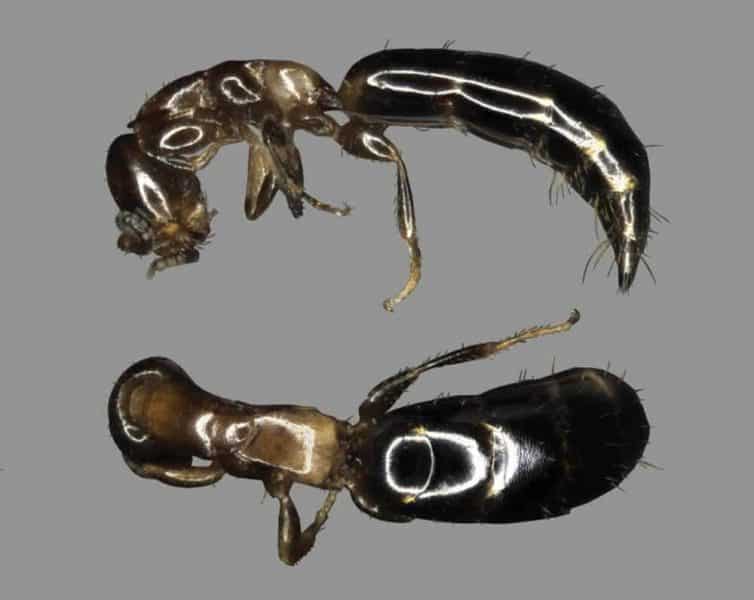When Michael Skvarla, Ph.D., started at his job as Insect Identifier and Extension Educator at Penn State University in 2017, it wasn’t long before he had a mystery on his hands.
A resident in Florida sent specimens of a tiny wasp to the Penn State lab, saying the wasps were infesting his home and that he’d been stung. They represented a puzzling case. “I knew immediately that the wasps were some kind of bethylid, but it’s not a family I’m overly familiar with,” Skvarla says. “I knew bethylids are capable of stinging people, but they’re generally found in leaf litter and away from human habitation, so it seemed odd the client was being stung.”
So, Skvarla got to work sleuthing. Google turned up a paper on a perhaps similar case from Italy in 2014. A copy of 1978’s The Bethylidae of America North of Mexico, by Howard E. Evans, helped confirm the genus of the specimens was Sclerodermus, same as in the report from Italy. But to get the specific identification, Skvarla needed museum specimens of three North American Sclerodermus species. “Using Evans’ Sclerodermus key and the museum specimens, I was able to determine the Florida specimens were S. macrogaster, which is native to the southeastern U.S.,” he says.
But the identification, in this case, represented a first. Sclerodermus macrogaster had previously never been reported infesting a home in North America. Skvarla saw it as an opportunity to dig a little further into the genus, and his resulting short profile of Sclerodermus wasps and the case of S. macrogaster infestation were published in February in the Journal of Medical Entomology.
Sclerodermus are generally small wasps (1.5 to 6 millimeters in length). Two other species, S. carolinensis and S. ventura, occur in the U.S. and Canada (Sclerodermus domesticus is the species previously reported stinging humans in Italy). Species in the group mainly parasitize wood-boring beetles. This behavior leads to the occasional co-infestation of a home in which such beetles are present. Adult male Sclerodermus wasps are both few in number and short-lived: Sex ratios in offspring typically skew 86-97 percent female, and the males live for only about a week, compared to a lifespan of as long as seven months in females. Moreover, the vast majority of the wasps never grow wings, which makes them easily mistakable for ants to the untrained eye.
The question still remains why a S. macrogaster infestation is a rarity compared to more commonly reported Sclerodermus infestations elsewhere, though Skvarla suggests a few possible explanations.
“First, the use of air conditioning and window screens is much lower in Europe and particularly Italy, where S. domesticus infestations are often reported, compared to the U.S.,” he says. “It might be that window screens and use of air conditioning, which requires windows to be closed, helps prevent powder post beetle infestation, which allow Sclerodermus co-infestations. It might also be that the U.S. and Europe have similar levels of wasp infestations but, because Sclerodermus infestations are reported in European literature—many of the papers are in French or Italian—that there’s a higher awareness of the problem, so it’s more frequently reported. It could also be that some physiological trait makes S. domesticus better at living in homes compared to North American species.”
Whatever the case may be, the body of knowledge about Sclerodermus wasps, and their potential for infestation and stinging humans, is now a bit larger, thanks to Skvarla.
All in a (few) days’ work for the Insect Identifier.

